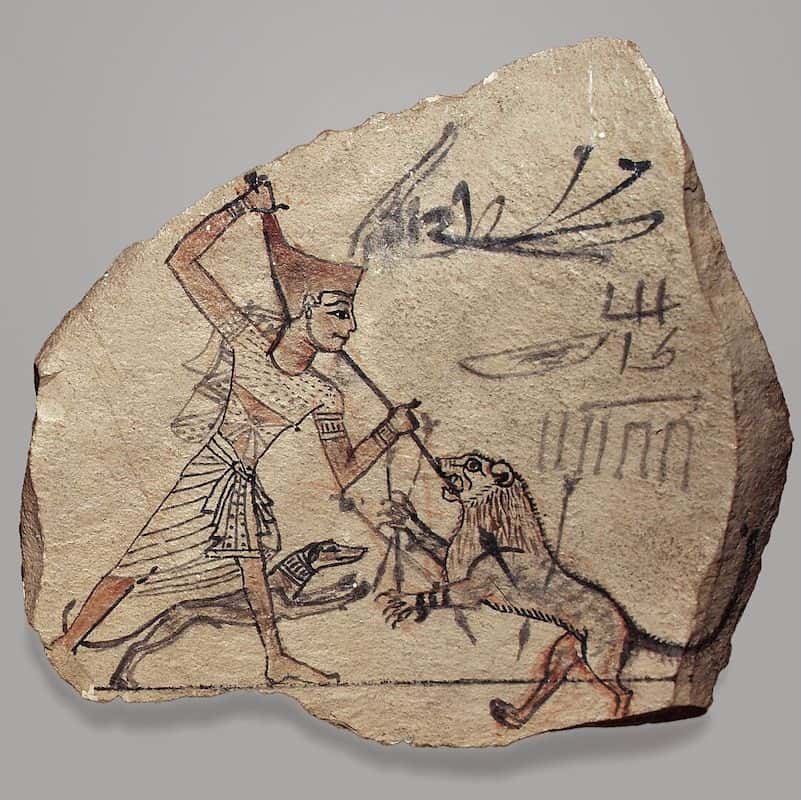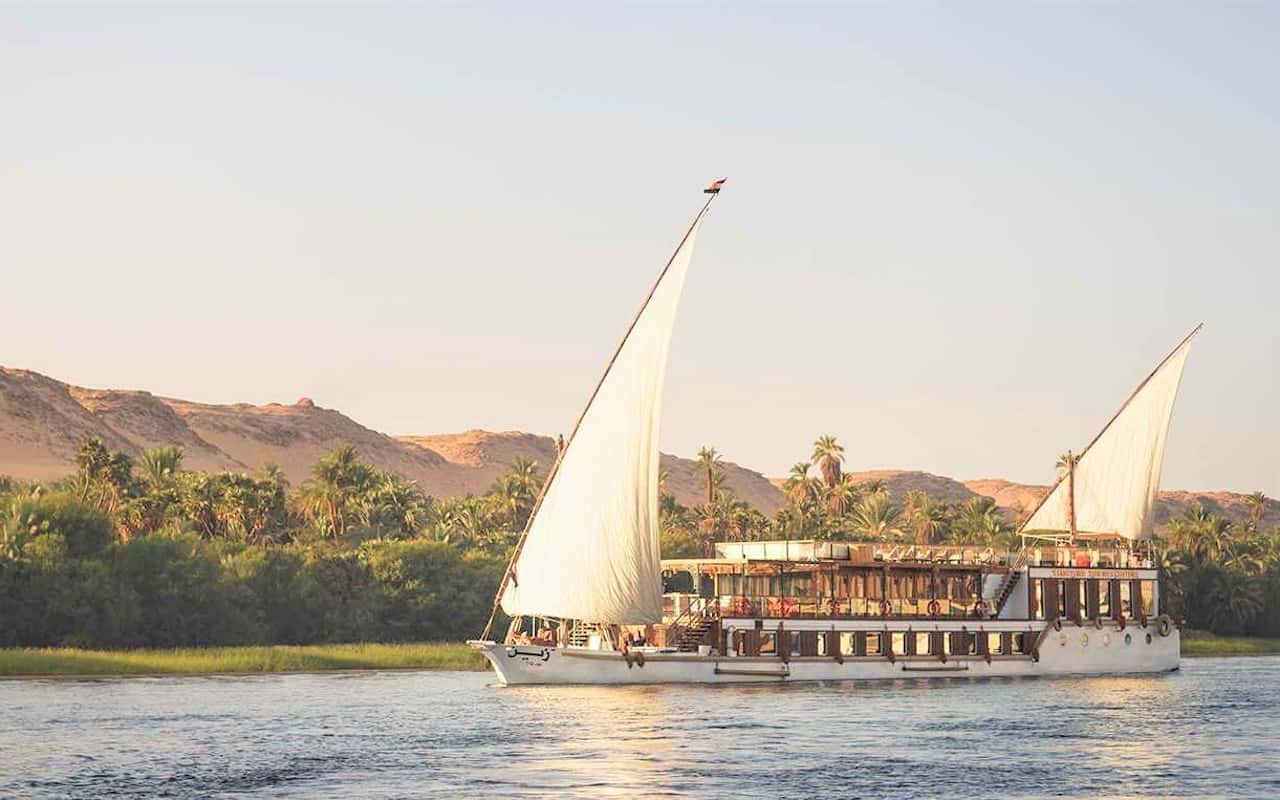
The Egyptian lion goddess Sekhmet reclined on her throne as a slave’s ostrich feather fanned a gentle breeze. At her feet lay a magnificent black-maned lion called Maahes, meaning “he who is true beside her.” Maahes is a deity, a god of war, and the son of the creator god Ptah.
The sound of soldiers marching into the throne room with a prisoner woke Maahes. The lion sat motionless, studying the well-dressed prisoner who was forced to his knees and heatedly argued with Sekhmet. The man became alarmed when the goddess turned to Maahes and waved her hand toward him.
The lion guardedly crept forward. He paused, arched his back with an angry twitch of his tail, tucked his back feet under, and pounced on the screaming prisoner with slashing claws. Maahes paused to watch the man writhe in pain and roared as spittle flew from his mouth. The nobles dashed towards the throne room’s exit as the soldiers stepped back in formation with spears at their sides.
The lion straddled the terrified prisoner and sniffed his face with rancid, hot breath. Sekhmet watched with a smile as her lion god sank his fangs into the screaming man’s shoulder and dragged him outside…
Are you prepared for Egypt 5,000 years ago?
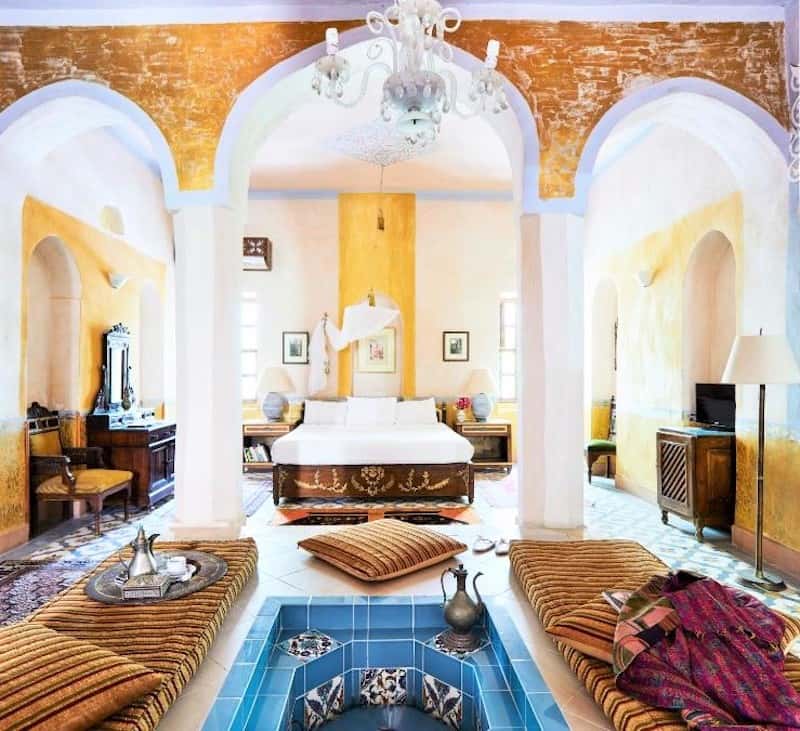
Fly into Luxor, Egypt (LXR) with accommodations at Al Moudira Hotel on the Nile’s west bank.
It is a unique, privately owned boutique hotel resembling an oriental palace with courtyards, fountains, archways, domed ceilings, sunken bathtubs, and lush gardens. Recoup from long international flights and many time zones in this extraordinary Egyptian property.
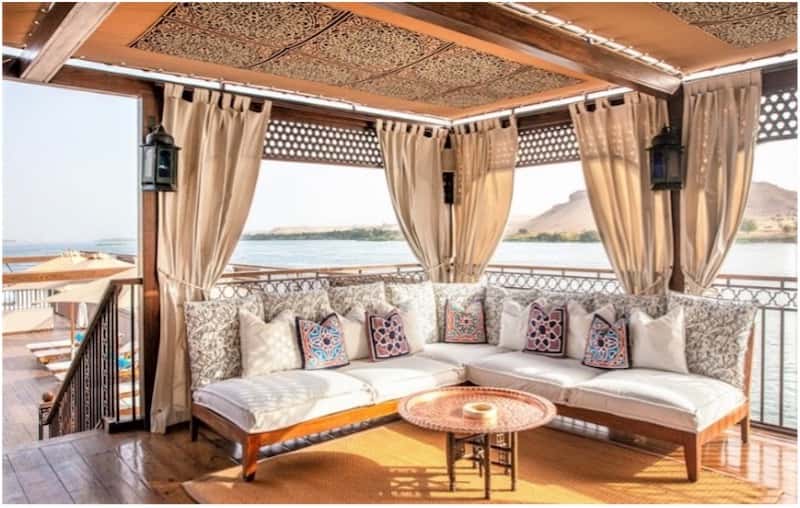
Board the dahabeya and check in at the main desk. After lunch, the afternoon is at your leisure. Enjoy tea on the sundeck, lay by the pool, or perhaps take a shopping trip to Caravanserai in Luxor, a delightful treasure trove of Egyptian crafts. You will overnight on the sailboat in Luxor.
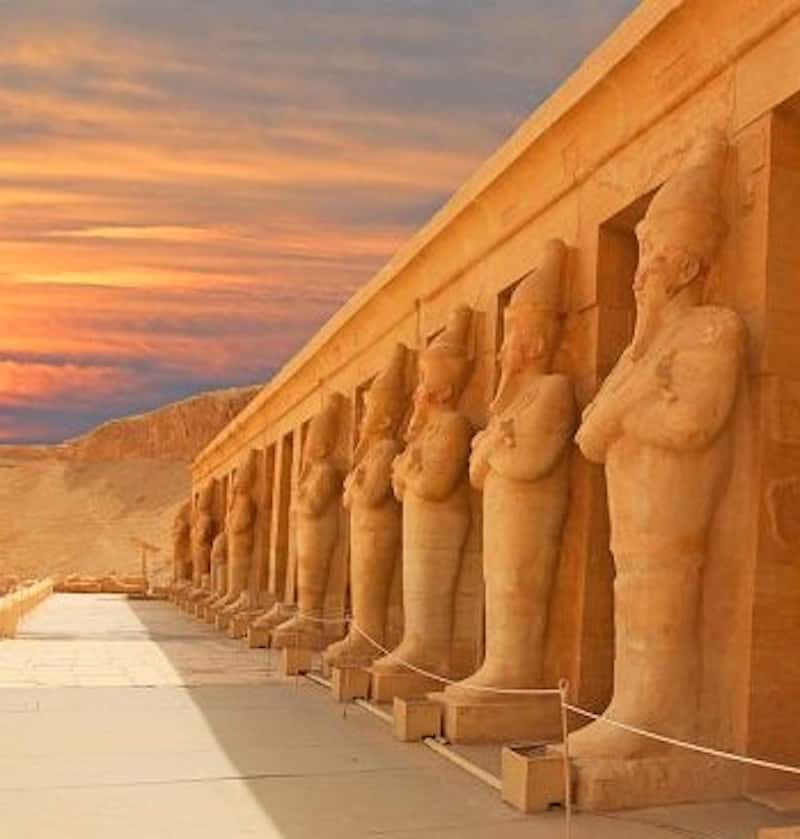
Your morning excursion is to the Valley of the Kings, Colossi of Memnon & Queen Hatshepsut’s Temple.
Hatshepsut declared herself Pharoah, ruled as a man for over twenty years, and portrayed herself in statues and paintings with a male body and false beard.
This desert valley contains the ancient burial ground of many Egyptian pharaohs, and among the 60 royal tombs is the famous tomb of Tutankhamun, found in pristine condition. Tut became pharaoh in 1332 BC at the age of nine and ruled during a time of great conflict when battles raged over land boundaries between Egypt and the neighboring kingdom of Nubia.
The sail to Esna is 9 hours, where you’ll overnight.
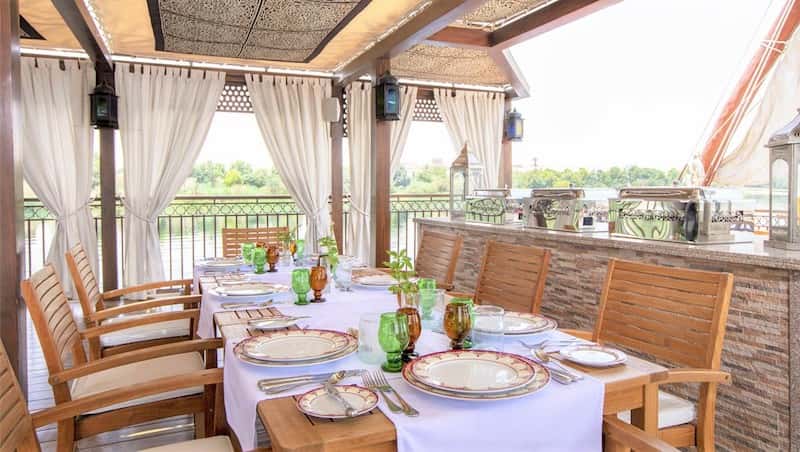
The sail to Edfu is 9 hours.
Edfu Temple is one of the most striking and complete ancient Egyptian temples dedicated to worshiping the god Horus. Situated on the western bank of the Nile, its construction began during the reign of Ptolemy III in 237 BC and took 180 years to complete.
Your sail to Kom Ombo is 11 hours, where you’ll overnight.
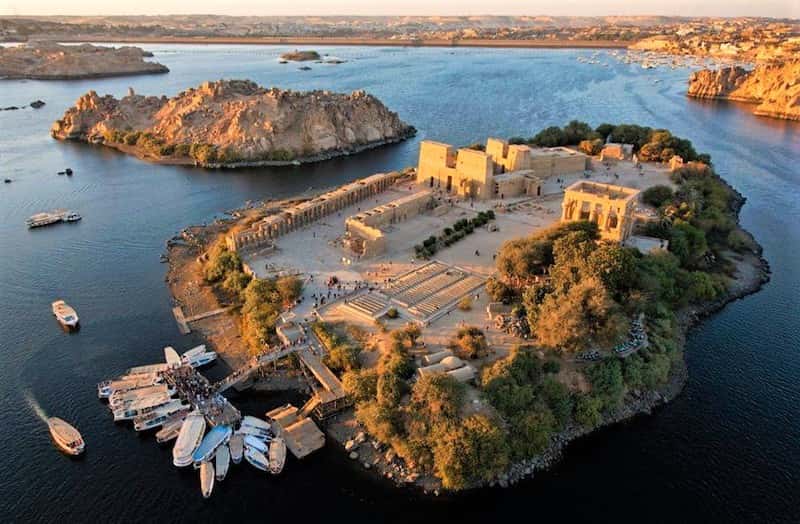
Even today, women and children come to the banks of the Nile River to gather water against the backdrop of ancient ruins.
Kom Ombo Temple & Crocodile Museum is one of the more unusual temples in Egypt. Thousands of crocodiles were bred and reared in captivity to be dispatched and expertly mummified as offerings to the potent gods. They were sacrificed to act as intermediaries between humans and the ancient Egyptian deity Sobek, who was associated with fertility as crocodiles are prolific breeders.
Due to the conflict between Sobek and Horus, ancient Egyptians felt it necessary to separate their temple spaces within one temple. The temple has two entrances, two courts, two colonnades, two Hypostyle halls, and two sanctuaries. One side is for each god.
The sail to Aswan is 5 hours. You’ll visit Aswan Dam, the longest dam in the world, and sail downstream to an island-based temple complex and visit the 3,500-year-old unfinished obelisk (the largest from ancient Egypt) and Philae Temple (380 BC). Overnight in Aswan.
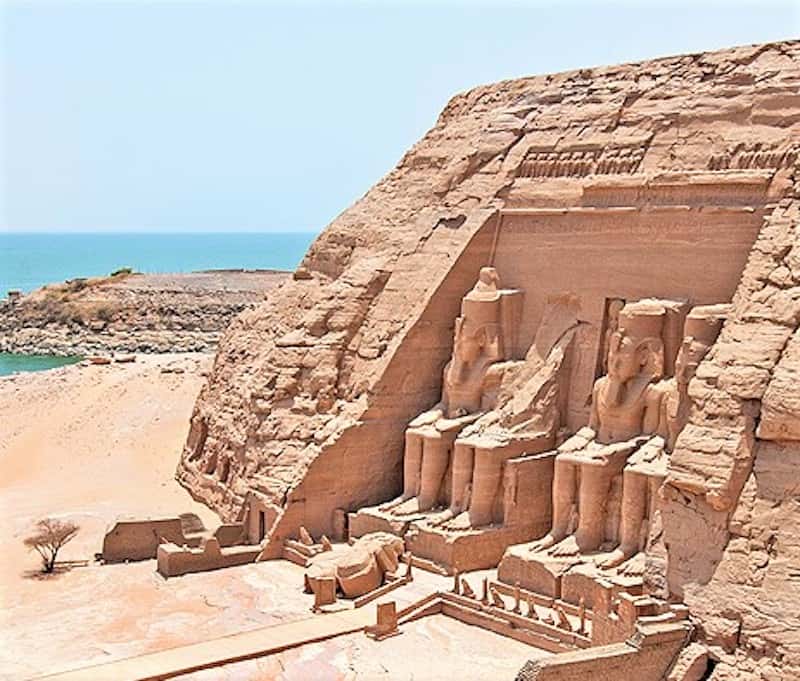
The Nile River was critical for the development of ancient Egypt. In addition to Egypt, the Nile runs through or borders 10 African countries. Your morning tour is to the Abu Simbel Temple, the site of two temples built by the Egyptian King Ramses II, who reigned in 1279 BC.
After lunch, you’ll take a felucca boat ride to the Botanical Gardens on Lord Kitchener’s Island. The felucca is a traditional small sailboat that sits low in the water and is often what comes to mind when you think of the Nile. In the 1880s, Lord Kitchener imported hundreds of exotic plants worldwide for his gardens. Your overnight is in Aswan.
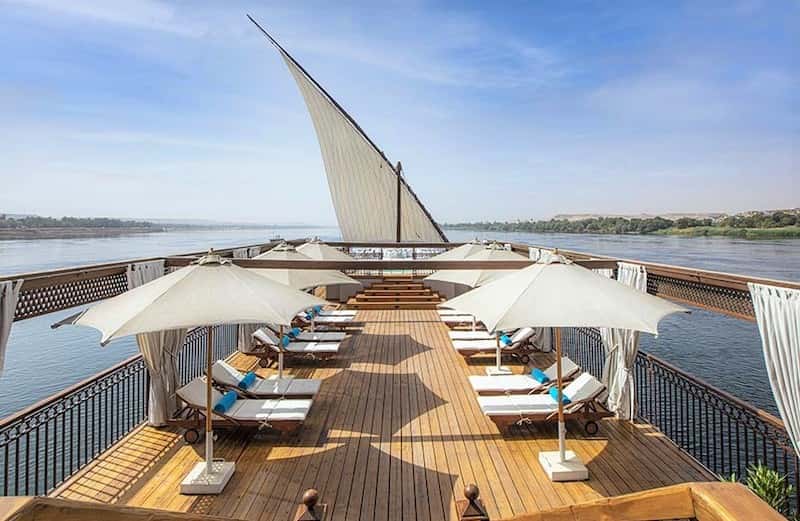
The sail to Esna is 14 hours.
The building of Esna Temple started in 1479 BC and became one of Egypt’s oldest cities. Esna’s urban fabric still holds Ancient Egyptian, Greco-Roman, Coptic, Islamic, and modern layers of history. Relax on board as your sailboat silently glides along the shores of the great Nile River.
Overnight is in Esna.
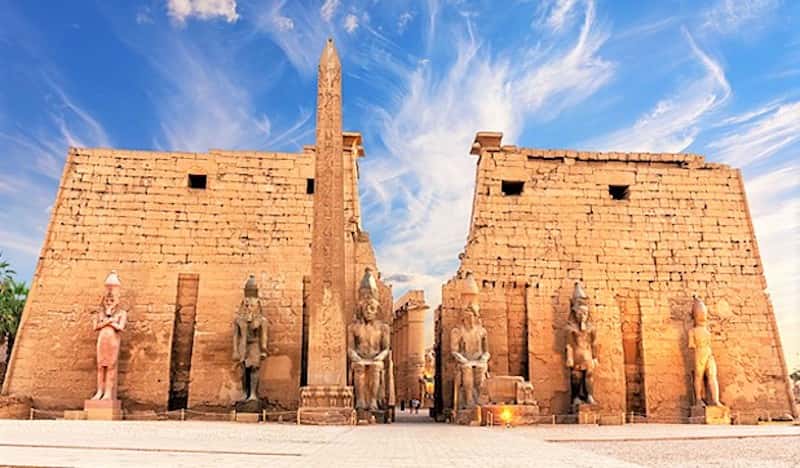
The sail to Luxor is 6 hours. Visit Karnak, the largest religious building ever constructed, dating back to 2055 BC. It is a cult temple dedicated to Amun, Mut, and Khonsu. Karnak evolved into a city of temples built over 2,000 years.
You’ll also visit Luxor Temple, constructed over centuries by Amenhotep III, Ramses II, Tutankhamun, and other pharaohs. Luxor was the largest and most significant religious center in ancient Egypt. Your overnight is in Luxor.
Check-out is after breakfast for your flight. You may want to add some beach time on the Red Sea before flying home. If so, we can arrange for a private chartered flight to get you there.
